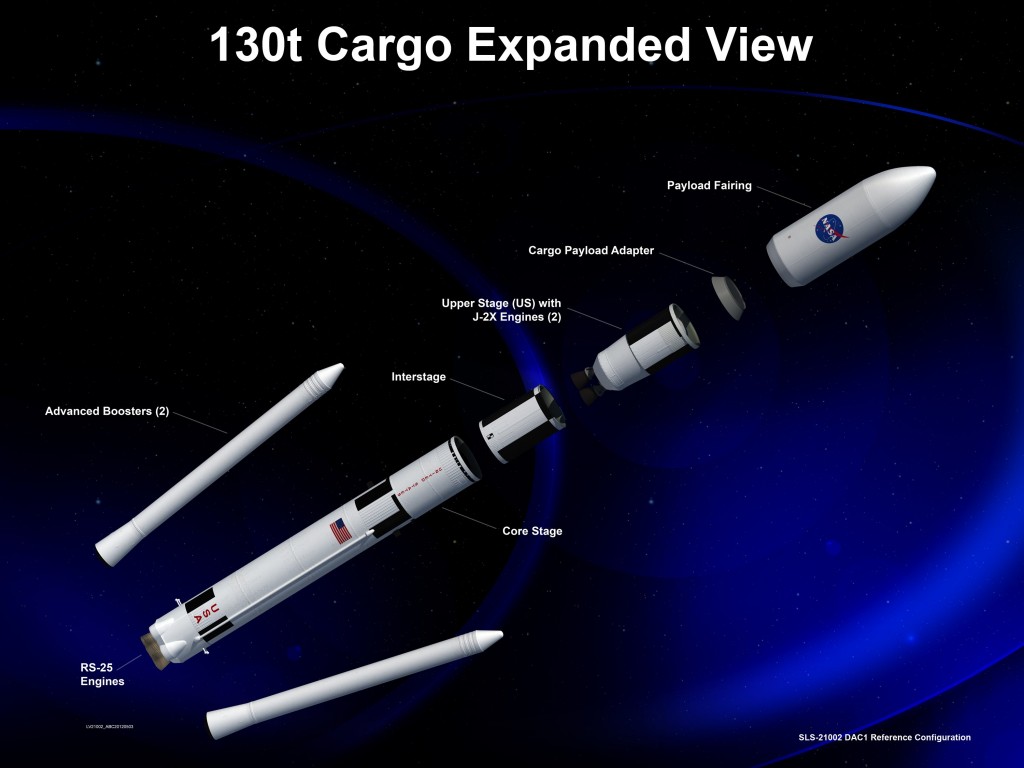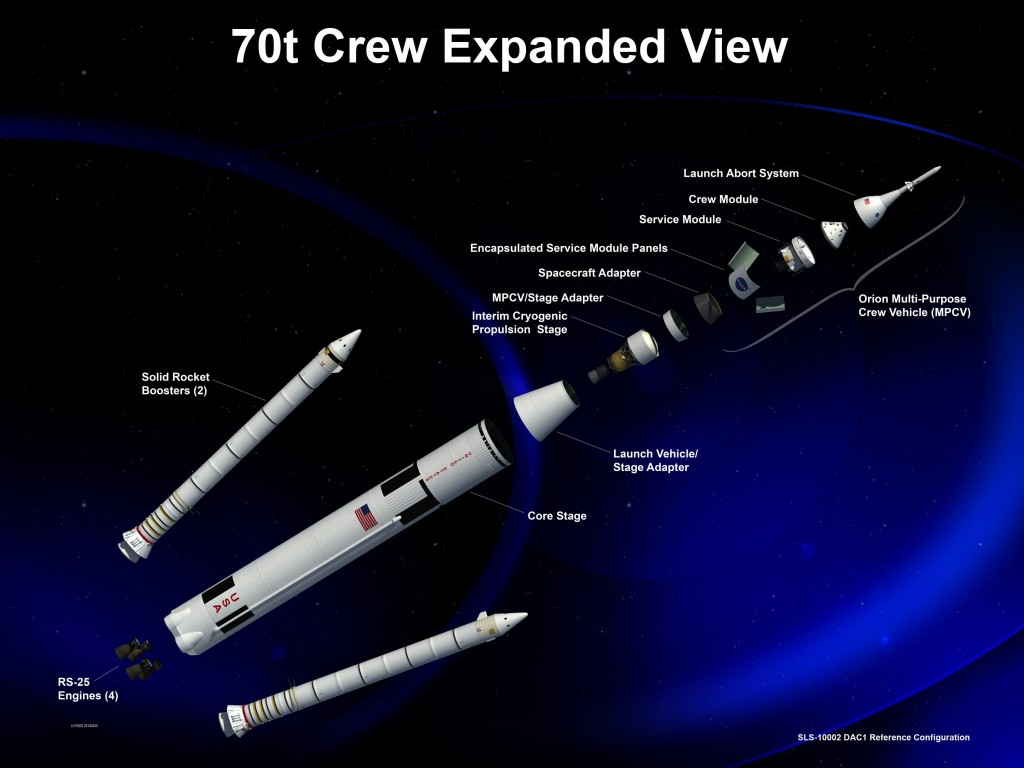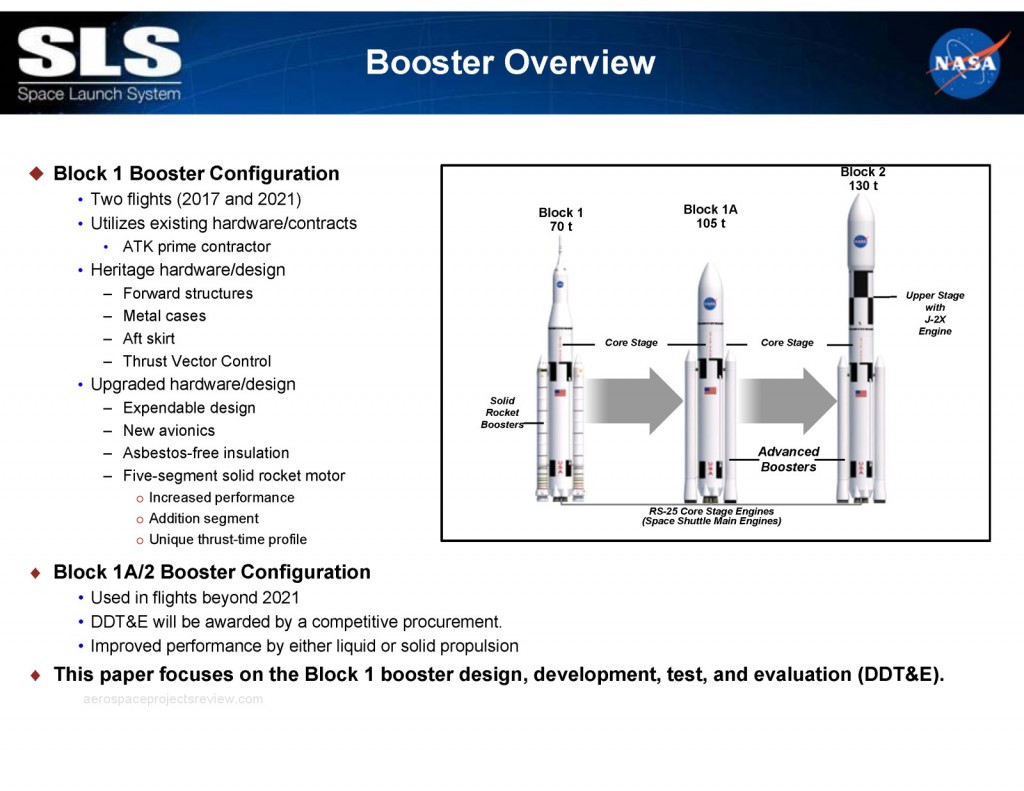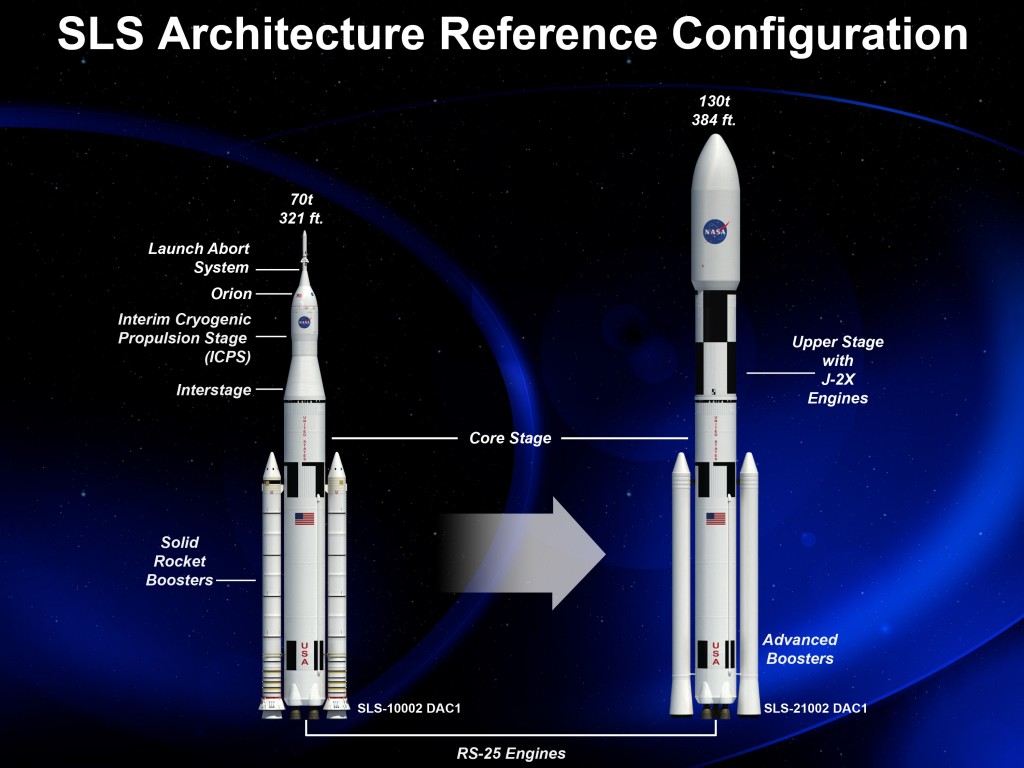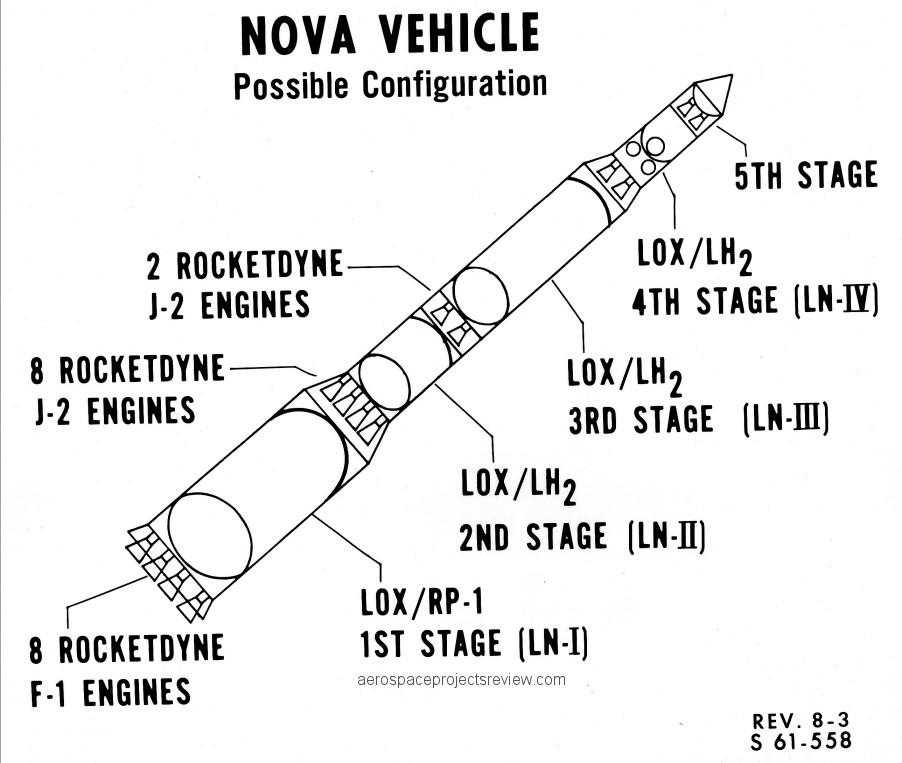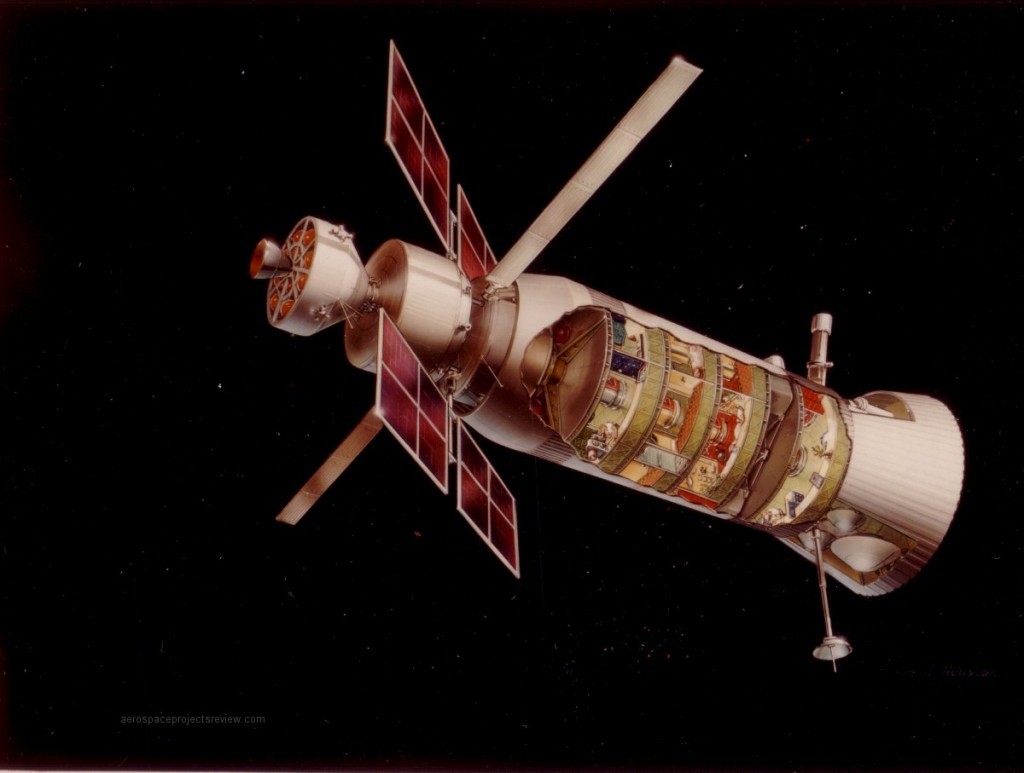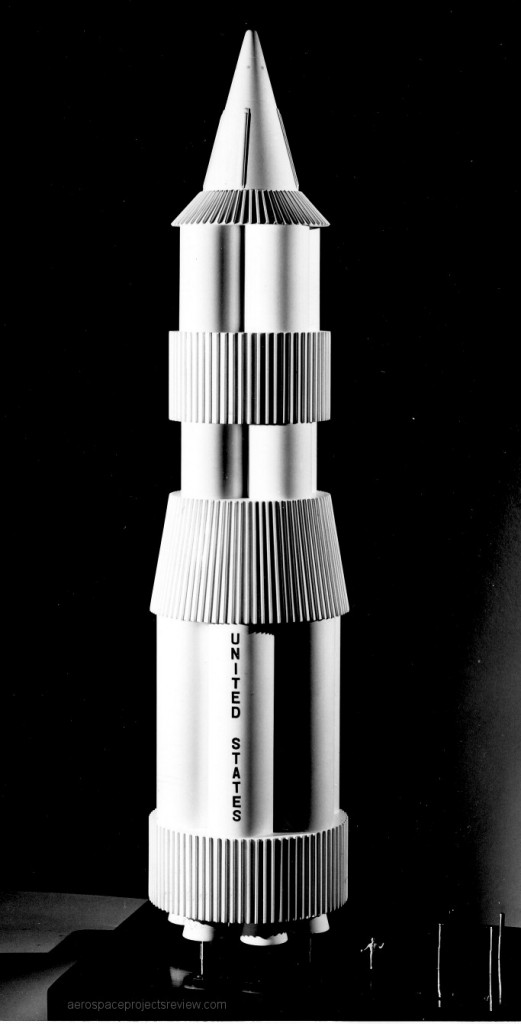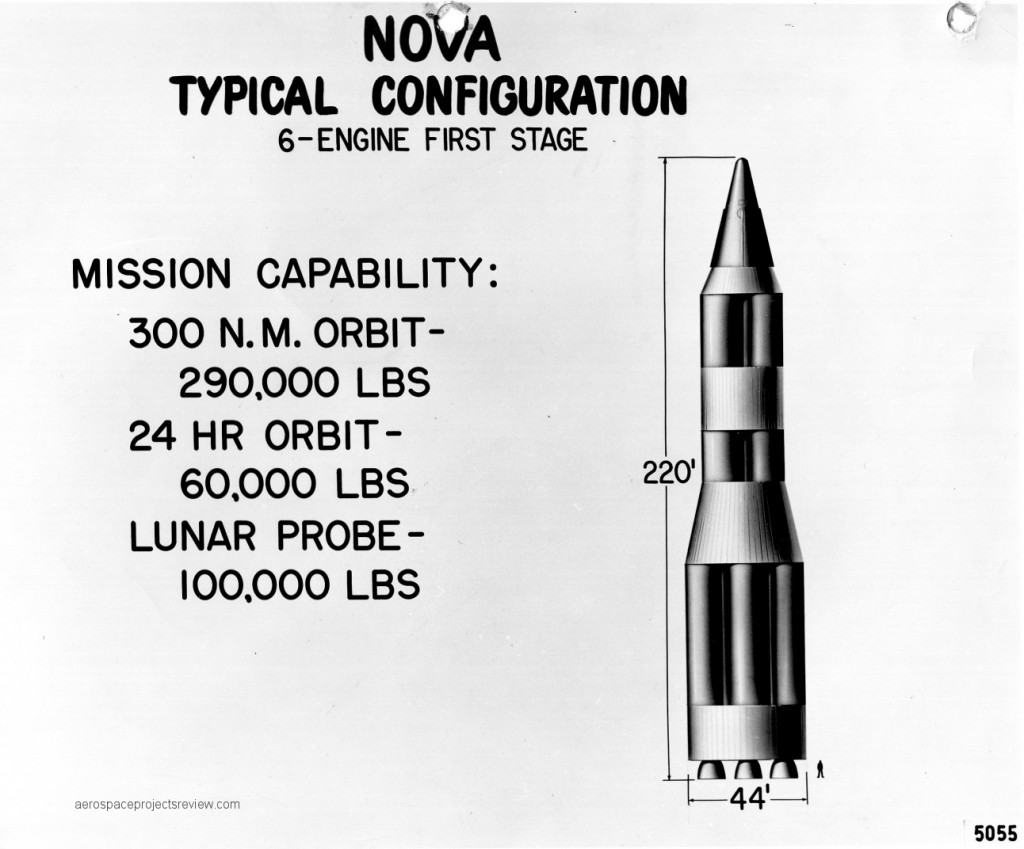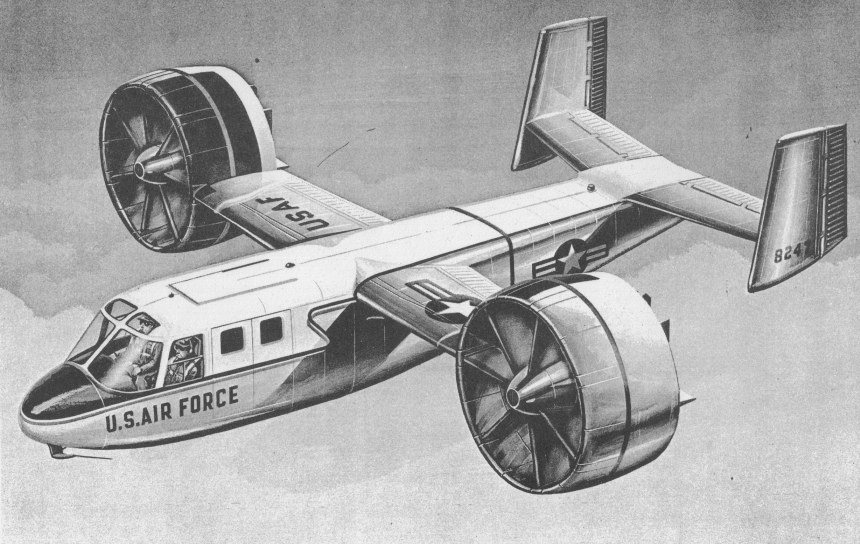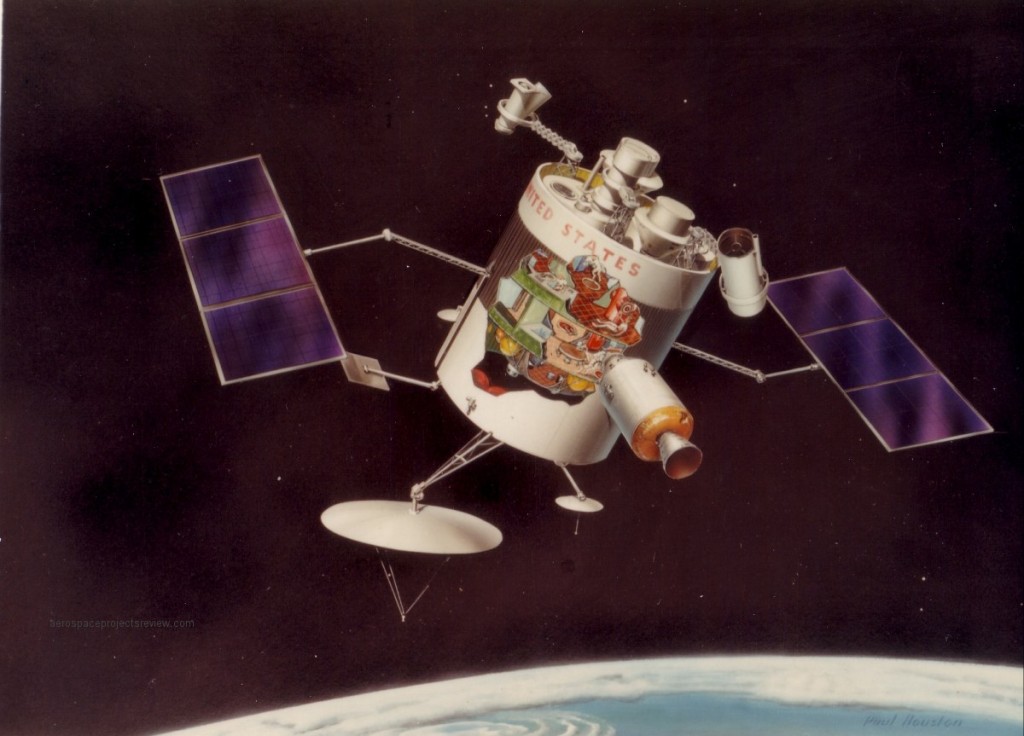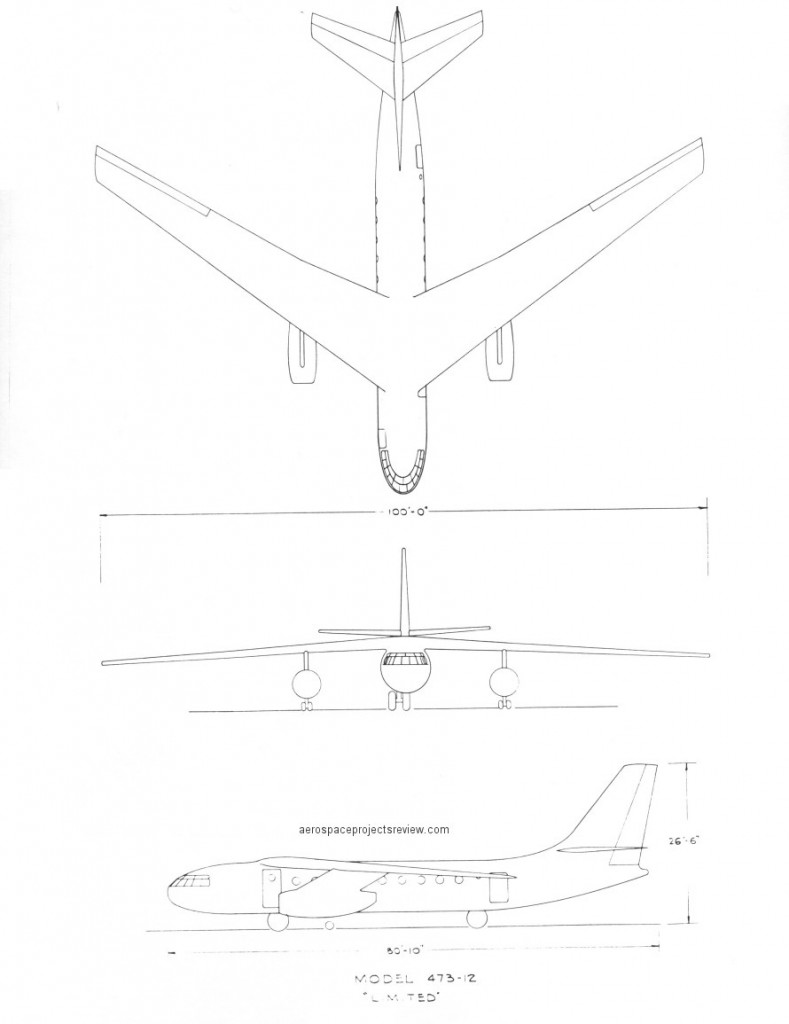NASA rendering of the Space Launch System Block 2 concept.
A chart from a NASA briefing from May of this year giving a quick look at three planned configurations of the Space Launch System which some/many in NASA hope to get built and flown in the coming years.
When transitioning from the Block 1 to Block 1A configurations, the plan is to replace the Shuttle-derived five segment solid rocket boosters with all-new advanced boosters, either liquid or solid. But history has shown that if what you’ve got *now* more or less works, replacing it with an expensive new rocket is a somewhat politically dubious prospect.
A pretty simplistic schematic diagram of a possible Nova launch vehicle, circa 1961, very similar to the “Chemical Nova.”
A Boeing (or possibly North American Aviation) artists concept of what appears to be a space station, but may be an interplanetary spacecraft. While overall it appears to be a Saturn V derived space station (using, apparently, the S-IVb tanks as a basis), on the right there appears to be a bay holding several Viking-style entry capsules. Numerous interplanetary spacecraft designs of the 1960’s had these. The capsules would hold not people, but unmanned landers and rovers. The relatively small size of the solar panels might indicate that this craft was designed for a mission to Venus; the apparent lack of much of a propulsion system might indicate that this was a flyby mission rather than a capture-and-orbit mission.
Note also the centrifuge that takes up the second deck from the “bottom.”
The D190 designation was the catch-all for a wide range of tilt-duct vehicles Bell designed in the 1950’s and 1960’s. The D190B was a rescue version, intended to go after downed pilots and the like. Other versions were similar, but designed to mate up with a C-130 in flight; the C-130 would transport the D190 to the vicinity of a rescue and would transport it home again, greatly increasing range and lift capability of the D-190. Another version was designed to similarly mate up with flying command posts and Air Force One, to transfer supplies and personnel.
No further data than the painting. Found some years back in the Boeing archive, so possibly North American Aviation. Appears to depict a dry-lab station built from Saturn V components, in this case apparently a shortened S-II stage.The Apollo capsule docked to the side seems a somewhat dubious proposition; there doesn’t appear to be an airlock there.
The use of such a space station as a mounting point for large astronomical telescopes such as shown here is also dubious. Vibrations, everything from solar panels being turned to air circulation systems to fluids being pumped to crewmen bumping around, would contribute to a pretty noisy image.
The Boeing 473-12, from July 1948. An early concept for a passenger jetliner, this would have been powered by two Rolls Royce “Nene” engines and could carry a crew of three and 27 passengers a range of 550 miles. This was an early step on the path to the 707, the worlds first successful jetliner.
A three-view of the early jetliner design, showing the clean lines and basic geometry that would become virtually standard for the next seventy years or more.
